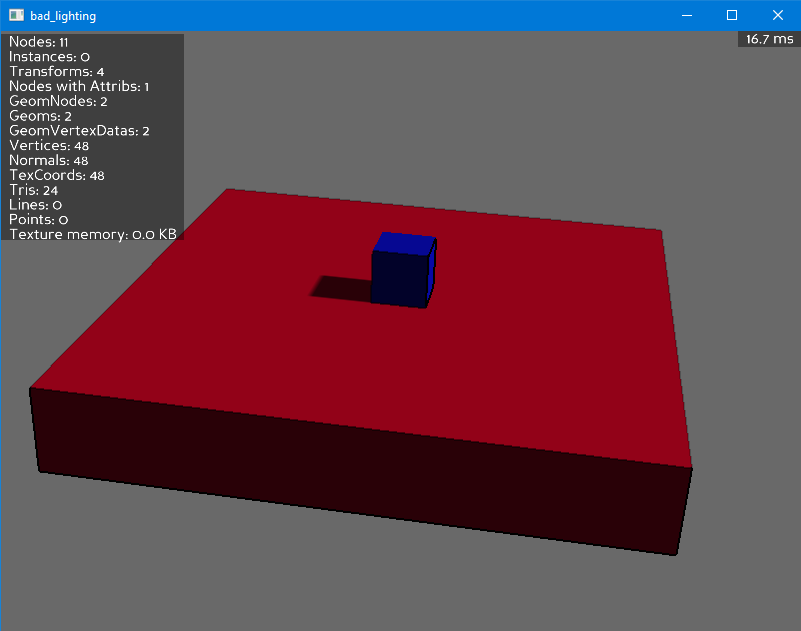I have created a module that converts the output file panda3d-gltf/panda3d-blend2bam in accordance with the standard auto shader.
fix_gltf_bam.py
from panda3d.core import MaterialAttrib, Vec4, TextureAttrib, RenderState, TextureStage
def render_stage_convert(node, use_modulate = False, use_normal = False, use_selector = False, use_emission = False):
for node_path in node.find_all_matches('**/+GeomNode'):
geom_node = node_path.node()
new_render_state = RenderState.make_empty()
for index_geom in range(geom_node.get_num_geoms()):
render_state = geom_node.get_geom_state(index_geom)
if render_state.has_attrib(MaterialAttrib):
material = render_state.get_attrib(MaterialAttrib).get_material()
#material.set_diffuse(Vec4(*material.get_base_color()))
material.set_twoside(False)
material.set_refractive_index(1)
material.set_shininess(0)
material.clear_metallic()
#material.clear_diffuse()
#material.clear_base_color()
material.clear_ambient()
material.clear_emission()
new_render_state = new_render_state.add_attrib(MaterialAttrib.make(material))
if render_state.has_attrib(TextureAttrib):
new_texture_attrib = TextureAttrib.make_default()
texture_attrib = render_state.get_attrib(TextureAttrib)
count_stages = texture_attrib.get_num_on_stages()
for index_texture_stage in range(count_stages):
texture_stage = texture_attrib.get_on_stage(index_texture_stage)
texture = render_state.get_attrib(TextureAttrib).get_on_texture(texture_stage)
sampler = render_state.get_attrib(TextureAttrib).get_on_sampler(texture_stage)
if texture_stage.get_mode() == TextureStage.M_modulate:
if use_modulate:
new_texture_attrib = new_texture_attrib.add_on_stage(texture_stage, texture, sampler)
if texture_stage.get_mode() == TextureStage.M_normal:
if use_normal:
new_texture_attrib = new_texture_attrib.add_on_stage(texture_stage, texture, sampler)
if texture_stage.get_mode() == TextureStage.M_selector:
if use_selector:
new_texture_attrib = new_texture_attrib.add_on_stage(texture_stage, texture, sampler)
if texture_stage.get_mode() == TextureStage.M_emission:
if use_emission:
new_texture_attrib = new_texture_attrib.add_on_stage(texture_stage, texture, sampler)
if new_texture_attrib.get_num_on_stages() > 0:
new_render_state = new_render_state.add_attrib(new_texture_attrib)
geom_node.set_geom_state(index_geom, new_render_state)
Use flags to disable unnecessary texture stages.
render_stage_convert(gltf, use_modulate = False, use_normal = False, use_selector = False, use_emission = False)
If you want to use a base texture for the color:
render_stage_convert(gltf, use_modulate = True, use_normal = False, use_selector = False, use_emission = False)
And so on, as for the selector mode, it is unlikely that it will ever come in handy, but I left it.
Usage example based on code from user @CeyaSpaceCowboy
source.zip (22.4 KB)
Don’t forget to check the Backface Culling box in the material. This will save you from shadow acne.
Also consider using anti-aliasing.
https://docs.panda3d.org/1.10/python/programming/render-attributes/antialiasing
I replaced your model with mine. I also set the ambient light to this value (0.2, 0.2, 0.2, 1) And I adjusted the lens size so that it covered my model. setFilmSize(200,200)
